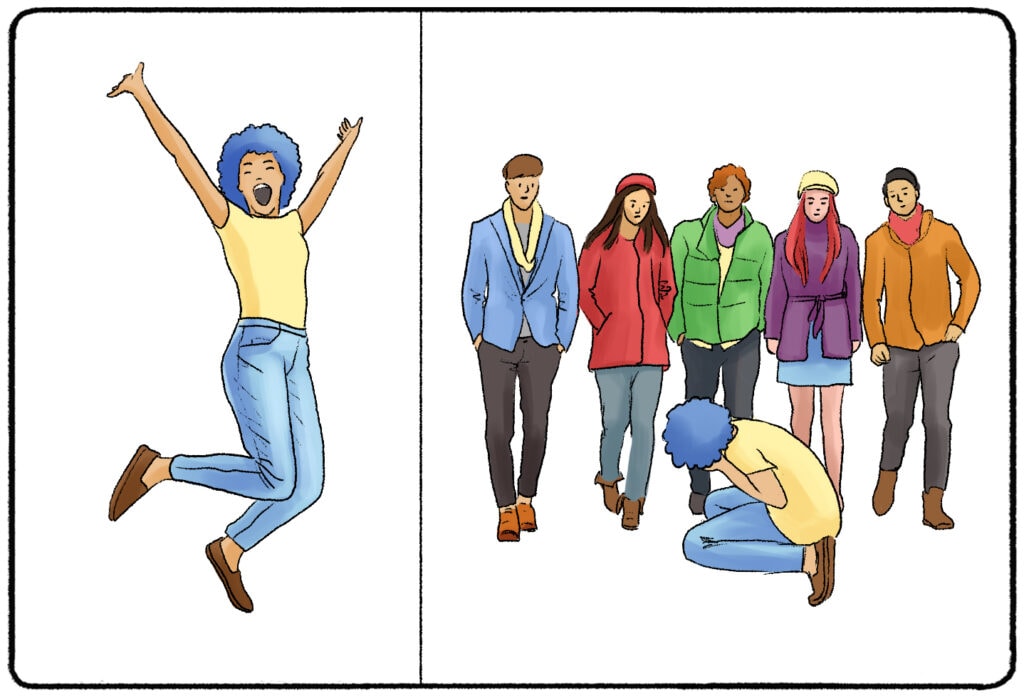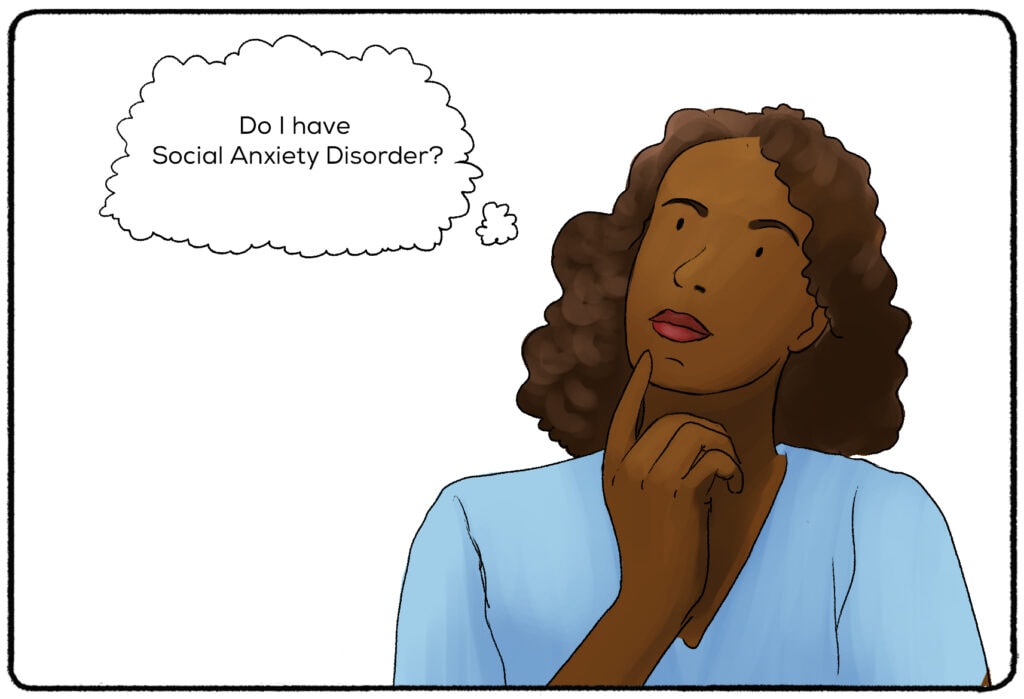We all know a “shy” kid. Maybe you had brothers, sisters, cousins, or neighbors who were always a little shy. Maybe your brother, sister, or friend worries about how shy their kids are. Shyness has never been a big deal - some kids are shy, and some aren’t. But what if shyness was a sign that a child was going to develop social inhibition or other mental health conditions in the future?
These are questions that have recently captured the attention of psychologists.
What Is Social Inhibition?
Social inhibition, also known as behavioral inhibition, is the tendency to avoid certain behaviors in social situations, including social interactions. Many psychologists also define social inhibition as the tendency to limit the expression of emotions and behaviors in social contexts.
Although social inhibition hasn’t been studied thoroughly, some psychologists believe that it could have a strong link to social anxiety disorder. There is still a lot more to learn on this subject, but taking a closer look at being “shy” could give us some important insight into the development of anxiety and other mental conditions.
Examples of Social Inhibition
Social inhibition may take many forms, including our behavior, appearance, or withdrawal from a situation. Regularly avoiding parties, festivals, or big conferences may be seen as social inhibition. Being the person at a party who prefers to sit with the host’s dog instead of introducing yourself to new people may be considered social inhibition. Keeping your arms crossed and your head hunched in a crowd may also be considered a form of social inhibition.
Additionally, a subtle but significant indicator of social inhibition is the difficulty some individuals have with maintaining eye contact during conversations. For those who are socially inhibited, the direct gaze of another person can feel overwhelmingly intimate or confrontational, prompting them to avert their eyes, which can hinder effective social interaction.

You may, for example, speak softer or keep funny jokes to yourself when you are around new people versus when you are in the presence of one very close friend.
Sometimes, this inhibition is subconscious. You don’t realize that you are actively avoiding a social situation by overloading your work schedule to avoid coworkers or making excuses for why you can't go to a party. Other times, the inhibition is conscious. People with a high level of social inhibition may be aware that they are avoiding social situations. They might even be aware of the fear that drives social inhibition: the fear of disappointing other people. We all desire to be accepted by the people around us. Social inhibition is often a response to that desire and the fear that we won’t fulfill those desires by being our “true selves.”
Again, there is still research to be done on this subject, and a lot goes into whether your behaviors are driven by phobias, anxiety, or more practical factors.
For instance, a phobia-driven behavior might be someone who avoids all elevators due to a deep-seated fear of being trapped in a confined space, which could be indicative of claustrophobia. An anxiety-driven behavior could be a person who, fearing judgment, rehearses conversations repeatedly before actually engaging in them, highlighting social anxiety. On the other hand, a practical factor might involve someone choosing to walk up a few flights of stairs instead of waiting for a busy elevator, prioritizing efficiency over social interaction.
Staying in for the night to avoid spending money may not be a sign of social anxiety, although using this as an excuse to avoid talking to people may be a sign of high social inhibition.
Effects of Social Inhibition
Why do we study social inhibition? For one, it can affect our lives. We all know someone who has missed out on an opportunity or couldn’t make friends because of their shyness. We all know someone who has gained a lot of success because they were extremely outgoing or uninhibited when speaking or networking with others. When we think of entrepreneurs, CEOs, or visionaries, we often picture someone who is not afraid of anything or who can talk to anyone about their big ideas.
Interestingly enough, social inhibition isn’t just about being shy. People who are regularly socially inhibited don’t just “miss out” or fail to make friends. By avoiding certain situations or interactions, we may be reducing our ability to learn and grow. Take the process of learning a language. A lot goes into learning a language: memorizing the vocabulary, understanding the grammar, and speaking to others. The more practice we get speaking to others in the new language, the faster we will catch our mistakes and improve. Social inhibition prevents people from engaging in this way. Research indicates that social inhibition can interfere with the completion of tasks, affecting aspects such as decision-making and complex reasoning, according to findings from Spanish psychologists.
Reducing social inhibition doesn’t just give people more opportunities to make friends or network. It also empowers them to interact more fully with their surroundings, facilitating opportunities for learning, personal growth, and effective problem-solving.
How to Reduce Social Inhibition
If someone wants to branch out and release themselves from the fear of social interaction, what can they do? Well, let’s look at the causes of social inhibition. Like many things in psychology, we can’t just point to a person’s disposition or the environment they grew up in. Many things contribute to (or reduce) social inhibition.
Brain Activity or Personality
Some studies suggest that the tendency for social inhibition may be tied to inherent personality traits. For instance, a propensity for dependency can often correlate with social inhibition. The reluctance to mingle in large groups or the comfort found in familiar company at social events might stem from ingrained biological mechanisms rather than just the situation. This biological basis is partly attributed to the activity within the cortical social brain network. This network comprises brain regions, including the medial prefrontal cortex, the temporoparietal junction, and the amygdala, which collaborate to process social information and regulate social behaviors. Over-activity in these areas has been observed in individuals who exhibit high levels of social inhibition.
The cortical social brain network is responsible for more than just our interactions with others. It plays a crucial role in interpreting social cues, understanding others' perspectives, and developing empathy. It is also involved in determining appropriate emotional responses to social situations. Therefore, if this network is overactive, it might result in an individual being more sensitive to potential social threats, leading to a heightened sense of anxiety in social situations. In essence, your brain may be signaling a heightened state of alert, influencing the decision to opt for solitude or a familiar social circle.
Becoming conscious of this over-activation could empower someone to work towards modifying their responses to social stimuli. This doesn't mean that one can 'switch off' their social inhibition. Still, with awareness and possibly interventions like cognitive-behavioral therapy, individuals might learn to manage their responses and gradually become less inhibited in social settings.
Age
Social inhibitions have been observed and studied throughout all age groups. In studying this phenomenon in children, teens, and adults, the only thing we know for certain is that social inhibition can change and develop over time. This may have to do with biology or the events that transpire and the knowledge that we gain over time.
Trauma
Biology may be linked to social inhibition, but our biology isn’t always set in stone. Certain situations or events, like trauma, may change brain activity and how we naturally function. Traumatic events are linked to the inhibition of expressing our emotions. This can tie into social inhibition. Failing to express ourselves in social situations can lead to a vicious cycle of lowered well-being, increased fears, and higher behavioral inhibition.
Internalizing Problems
Research has established connections between particular behaviors and social inhibition. In Sweden, for instance, studies have highlighted a notable correlation between children who exhibit a high degree of social inhibition and the presence of internalizing problems, which include conditions like anxiety and depression. Addressing these internalizing issues could potentially lessen the extent of social inhibition.
One effective method employed to reduce internalizing problems is cognitive-behavioral therapy (CBT). CBT helps individuals by teaching them to identify and challenge negative thought patterns and beliefs, replacing them with more realistic and positive ones. Through this therapeutic process, children and adults learn to cope better with stressors and regulate emotions more effectively. For example, a child who internalizes fears about social rejection can be guided through CBT to reframe their thoughts. Instead of thinking, 'Everyone will laugh at me,' they can learn to tell themselves, 'It's okay if someone doesn't like me; I can still be friendly and enjoy interacting with others.' By systematically challenging these internalized fears, CBT aims to reduce anxiety and avoidance behaviors, thereby diminishing social inhibition over time.
Alcohol Consumption or Substance Use
You might have guessed that alcohol and some controlled substances can reduce social inhibition. In general, these substances lower our inhibitions. We are more likely to “go for it,” whether “it” is talking to someone you don’t know or throwing a glass across the room. The more alcohol that we consume, the less we are going to consider the social implications of our actions. And while some people refer to a drink or two as “liquid courage,” we all know someone who has done something under the influence that they wouldn’t do sober.
Does this mean that you should drink to reduce social inhibition? Not really. The effects of alcohol on the mind and body, especially when consumed in excess, are not always (if ever) worth the moments when you feel less scared to approach someone. People who use alcohol to overcome social inhibition are likely to realize that it is a crutch, not a helpful tool. If you tend to hold back in social interactions, you can use other methods to face your fears.
Power
One last interesting factor regarding social inhibition is power. When you appear to have more power over a situation, you will likely have decreased social inhibitions. Power comes in many forms. Wealth, success, or titles can give you the illusion of power. Hosting a party in your home can change the power dynamic between you and your guests slightly. The influence a person wields from their societal position can also impact how you perceive them, shape your social dynamics, and define which behaviors are acceptable or unacceptable. If you change your perception about the power you have over yourself or the power another person has over you, you might find yourself less fearful of them or social interaction.
Is Social Inhibition A Sign of Social Anxiety Disorder?

Social inhibition is not social anxiety disorder (SAD). People with social anxiety disorder are more likely to display high social inhibition, but social inhibition is not the only symptom of social anxiety disorder. As you just learned, power dynamics and other situational factors may influence whether or not you inhibit certain social behaviors. Being nervous or shy in front of Bill Gates or a celebrity does not mean you have social anxiety disorder, for example.
Psychologists are interested, however, in the link between social inhibition as a child and social anxiety disorder as an adult. If we can pinpoint the behaviors that indicate the likelihood of developing social anxiety disorder, we can offer treatments and interventions sooner and slow the development of this disorder. Again, there is much to learn about how these behaviors, inhibitions, and disorders work!



